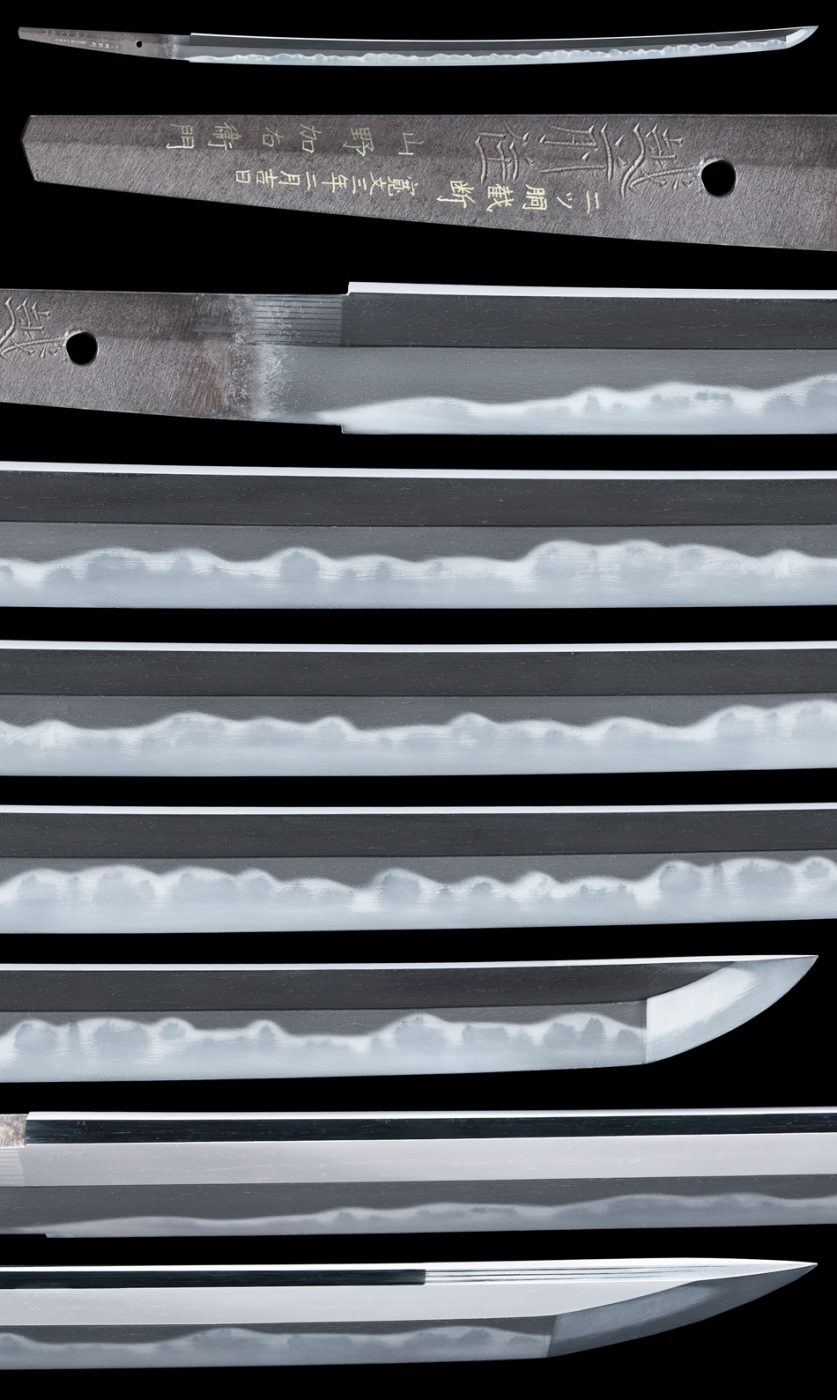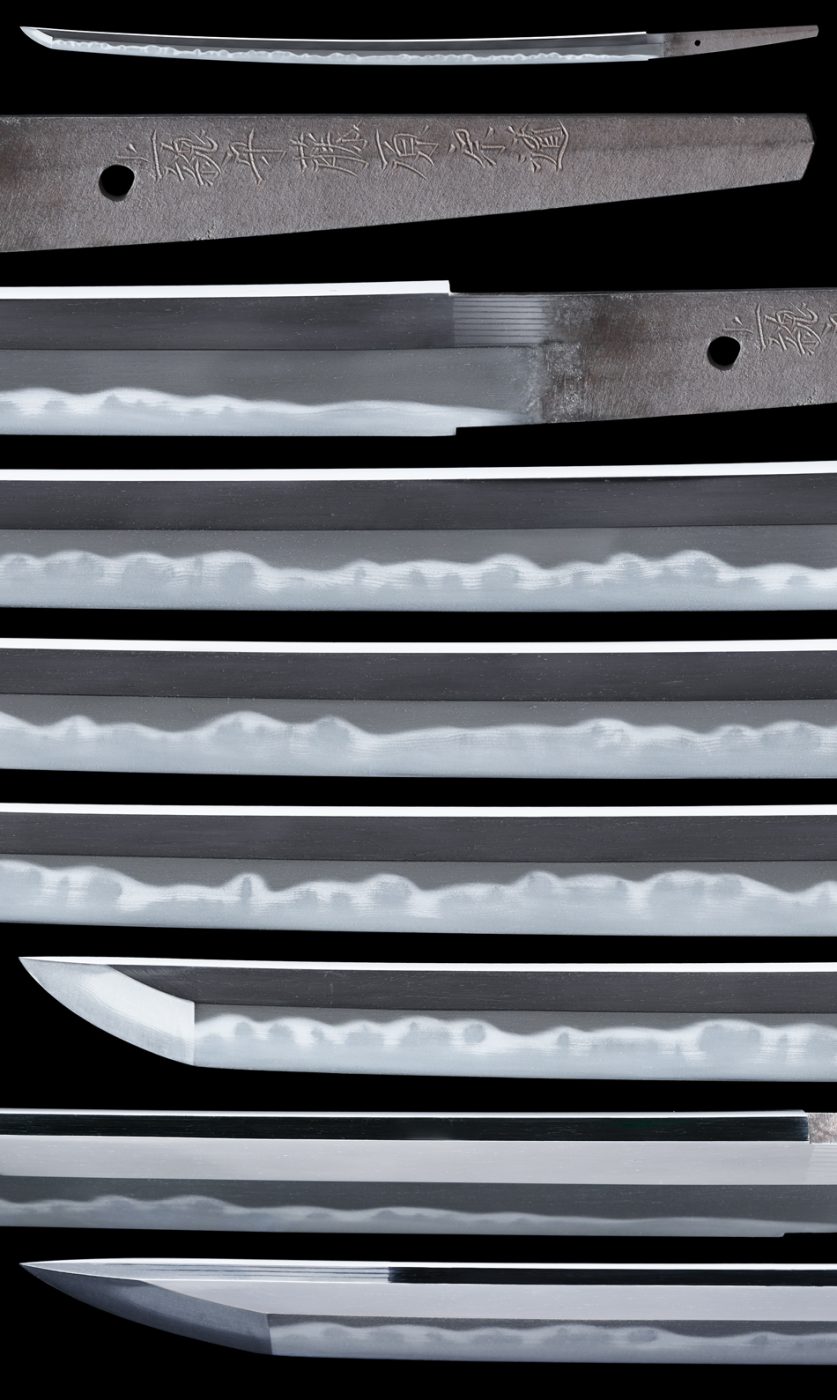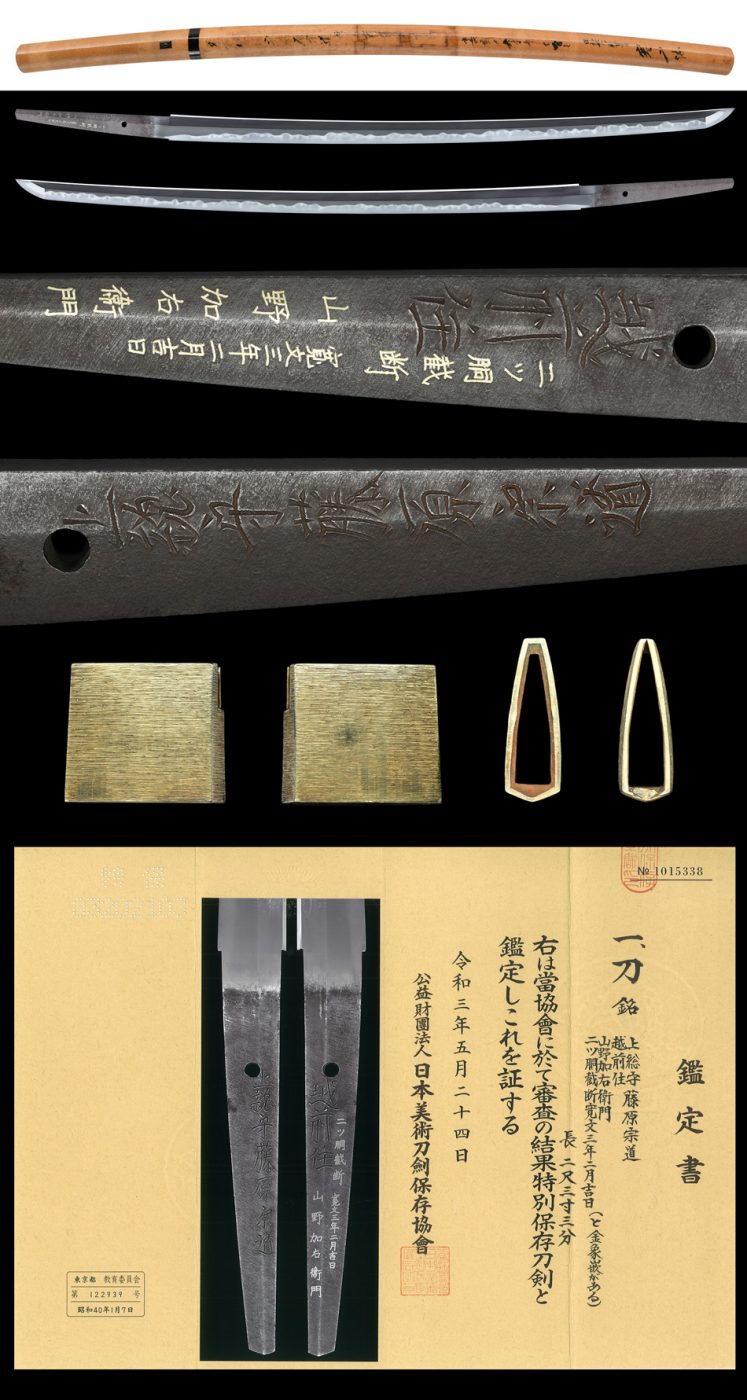Katana [Kazusa-no-kami Fujiwara Munemichi][N.B.T.H.K]Tokubetsu Hozon Token
ASK
Stock number:KA-100221
Paper(Certificate):[N.B.T.H.K] Tokubetsu Hozon Token
Country・Era:Echizen (Fukui)・Early Edo period 1663
Blade length(Cutting edge): 70.7cm
Curve(SORI): 1.1cm
Width at the hamachi(Moto-Haba): 3.26cm
Thickness at the Moto-Kasane: 0.76cm
Wide at the Kissaki(Saki-Haba): 2.50cm
Thickness at the Saki-Kasane: 0.50cm
Habaki:One parts, gold foil Habaki
Sword tang(Nakago):Unaltered,Kattesagari file pattern
Rivet Holes(Mekugiana): 1
Shape(Taihai): Shinogizukuri, Iorimune, Chu-kissaki
Jigane(Hada): Masame
Temper patterns(Hamon): Gunome with Sunanagashi,Kinsen
Temper patterns in the point(Bohshi): Hakikake turn Komaru
Registration Card: Tokyo
【Additional Information】
In the early Edo period, many excellent swordsmiths grew up in Echizen-no-kuni, since Shimosaka school swordsmiths were moved to there, including Kanenori (兼則) and Kanenori (兼法) from Mino, and Yasutsugu from Omi. In Shimosaka in Echizen-koku, there were great swordsmiths such as Echizen-Yasutsugu, Simosaka-Sadatsugu, Higo-daijo Sadakuni, and Yamato-daijo Masanori.
Kazusa-no-kami Munemichi was a swordsmith in Shimosaka school. His real name was Sugaya-kurouemon. His name was succeeded for generations from the Kanbun, mid-Edo period to the end of the Edo period. He signed as Munetsugu at the early work and later changed his name to Munemichi.
As the characteristics of swordsmiths in Echizen including him, Kitae is Itame Nagare with Ji-nie, Hada appeared well, and their swords were appreciated as tough and sharp. This sword shows these characteristics well.
This sword is 2 Shaku 3 Sun 3 Bu (70.7cm) long, a wide, normal thickness, shallow sori, and Chu-kissaki Nobiru, and shows sharp shape.
The jigane shows fluid Masame with fine Jinie.
The Hamon is blight and clear with a lot of Ko-nie, rich in variation, Gunome which has a small and large rounded Yakigishira, mixed with Togariba, and very gorgeous. In the blade, there are a lot of long Sunagashi and Kinsen to Yokote, along Kitae-hada.
The Boshi line enters slightly Notare then Komaru round tip.
This sword shows the style the Munemichi was good at.
We recommend this sword as the one which is superior to even the more famous swordsmiths of the same Echizen, and his elaboration which shows his skill to the fullest.
新刀期に越前国では、美濃国より兼則、兼法、近江国より康継らをはじめとする下坂一派が移住した事で、技量に優れた刀工に恵まれ大いに繁栄しました。同国下坂にあっては、上述の越前康継、下坂貞次、肥後大掾貞国、大和大掾正則などの名工が名を残します。上総守宗道は、同国下坂一派の刀工であるとされ、本名は菅谷九郎右衛門。江戸中期 寛文頃より江戸後期まで数代続きます。初銘は宗次、後に銘を宗道と改めています。同工を含む越前刀工の作刀は特色として、鍛えは板目が流れて地沸つき、肌がよく現れる作品が経眼され、頑強で斬れ味が良いと評されています。本作は同派の作風がよく示されています。
本刀体配は刃長が二尺三寸三分。身幅広く重ね尋常に、反りは浅く中切っ先がふくらやや枯れ心に延びる鋭利な刀姿です。地鉄は柾目が総体流れ心に肌よく現れ、細かに地沸がつきます。焼刃は小沸よくついて明るく冴え、大小頭の丸い互の目に、尖り刃を交えて変化に富み、派手やかな刃となります。刃中には鍛え地に沿うように砂流し、金線が長く現れ、盛んに横手まで働き続きます。帽子はわずかに湾れて先掃きかけて小丸に返ります。本作、上総守藤原宗道の得意とする作風で、同国の著名刀工に勝る出来口であり、同工の技巧を存分に示し覇気に満ちた入念作としてご紹介致します。白鞘、金一重はばき、特別保存刀剣鑑定書。








